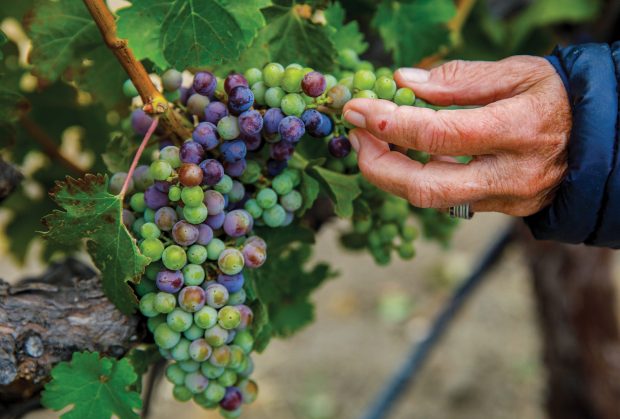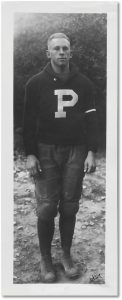What To Do with Old Mailboxes?

As USC’s first full-time university archivist, I had no hesitation in positing a solution as to how to preserve and repurpose all of the “lovely old mailboxes” removed from Smith Campus Center by turning to a form of a time capsule.
Assign six of the mailboxes across to each class year since, let’s say, 1950 and invite members of each graduation class to reach some consensus as to what small-sized document or memorabilia might best testify to the history or notable contribution of that class and add such archival gems going forward to each present and future class’s six “document” boxes.
I don’t know where the college archives are housed on campus, but if space is available, that hopefully subterranean space for such an organic special collection would be an excellent home to preserve Pomona history from the student body’s perspective. Examples of this might include music, photos, publications, diaries and original scholarship in the handy form of flash drives, DVDs, etc., together with small mementos. I’m sure you can add to this list.
What say you all?
—Paul Christopher ’58
Pebble Beach, CA
1923 Football Captain, AKA ‘Dad’
That was such a nice surprise, to open my Pomona magazine and see my dad, Herb Mooney 1924, looking back at me (“100 Years Ago: The Sagehens vs. the Trojans in the L.A. Coliseum,” Fall 2023). What a great guy.
Delightful story. Just to keep the record straight, it isn’t that “five of his children” went to Pomona, but that “his five children” went to Pomona.
My father loved Pomona, and he loved football, and we used to see Mr. [Ranney C.] Draper 1925 when we went to games. Thank you for calling attention to a team of very good sports on a very special occasion in a very different era.
Way to go. Take a bow.
—Jane E. Mooney Carter ’65
Marshalltown, Iowa
A Toast to Pomona’s Winemakers
Thank you to Adam Rogers ’92 for a wonderfully informative interview chockful of winemaking insights with Cathy Corison ’75 (Fall 2023).
As a transplant now living in Europe (or the Old World, as the wine milieu would have it), while I possess the luxury of enjoying artisanal, well-made wines from independent-spirited vintners for a relative pittance—down with the three-tier U.S. wine distribution system!—I still hanker now and then for a taste of home in the form of the blessed Californian sunshine that ripens grapes like clockwork.

It’s actually quite rare that American wines are imported into Europe, given the general high labor and land costs as well as a bombastically stereotypical style, full of oak and tannin. And yet, almost without fail the likes of Chappellet [founded by the late Donn Chappellet ’54] and Corison are nearly universally admired by discerning palates and cited as New World exemplars that could have easily found roots in the Old World, even mistaken for an example originating from metropole Bordeaux.
Napa has become Disneyfied, where the economics of land acquisition and homogenous vinification also mean costs that are passed on to the taster and consumer, both monetarily and in the loss of terroir. Chapeau for our Sagehen trailblazers with their steadfast conviction to make wine that expresses the gifts of the fecund earth. I raise a glass of Kronos Vineyard or Pritchard Hill to those who concur.
—Cliff Wu ’08
‘s-Hertogenbosch, The Netherlands
Remembering Professor Richard MacMillen ’54
Dick MacMillen’s profound influence on my life began my freshman year at Pomona College in the spring semester of 1964, when I enrolled in General Zoology, a course he instructed for some 100 students, many of whom had aspirations of medical school. By the end of the semester, I was sure that I would not be among those headed for the glories of medical practice.
Instead, I became charmed by ecology, evolutionary biology and the special interests in “physiological ecology” that Dick portrayed: How do animals survive and reproduce in deserts, where heat and aridity prevail along with scarcity and unpredictability of vital resources? Dick demonstrated his love of desert physiological ecology by offering us first-year students a field trip out to the creosote bush scrub near Palm Springs, where he showed us how to catch desert iguanas and take their body temperatures with a miniature mercury thermometer. The lizards started off the morning relatively cool but climbed to body temperatures remarkably greater than standard human body temperature, showing us they were anything but “cold-blooded.” Then as the desert became too hot for even the lizards to tolerate, they retired to their underground burrows, while we Homo sapiens hung around sweating it out to complete our documentation that the lizards were in fact disappearing below ground for the duration of the excessive midday heat.
My sophomore year, I enrolled in Dick’s Comparative Anatomy course in the fall and his Animal Ecology field course in spring. An added highlight was the Zoology Department spring break trip Dick led to San Carlos Bay in Sonora, Mexico. Desert rodents (kangaroo rats!) and lizards abounded in the desert scrub and cactus, but snorkel-diving for spiny lobsters in the reefs just off the beach served as an introduction to marine biology—not to mention feasting on fresh lobster boiled in a big pot on a wood campfire.
My senior year was Dick’s first sabbatical to Australia, but during his absence from Claremont he put me in touch with Professor George Bartholomew at UCLA, with whom he had recently completed his Ph.D. I followed Dick’s path to Westwood. Later, my own first sabbatical was to Australia, and by happy coincidence that year (1983-84) was Dick’s third major stay in Australia, which allowed us to meet up again Down Under.
Dick’s guidance continued over a lifetime, as he moved from Pomona to UC Irvine, where he influenced my experiences as I figured out my dissertation and made postdoc plans. I’m happy to say I reached Dick by phone on his 91st birthday last April, a few months before his passing. His kind and gentle manner, sincerity, sense of humor and love of the academic life and natural history will remain a memory deeply imprinted in my mind.
—Jim Kenagy ’67
Emeritus Professor of Biology
University of Washington
Editor’s note: An obituary for Richard “Dick” MacMillen ’54 P’05, who taught at Pomona from 1960 to 1968, appears on page.

